Category: General
Posts about general topics about PJ’s preparation for a solo non-stop sailing circumnavigation
Current state of affairs
I think it’s time to take stock and see where I am. Have odds improved? Let’s start with time.
Time constraints
As indicated elsewhere timing calls for a departure mid October, which assumes an average boat speed of 7 kts. Granted Changabang is a fast boat and even a bump to a 7.5 kts average speed would allow us to depart 3 weeks later. So, there’s a bit of wiggle room with the start date.
Regardless, I am considering allowing one month for final preparation and loading. Before that Changabang will get a new bottom paint in the boatyard, for which I’m generously allocating one month too. That means that we need to be ready by mid August. Considering we’re about mid June, that leaves me with two months. I feel good that, based on what I plan to do, I will be able to leave this year.
What is left to do?
In the order of importance, I see the following: a safe passage making sailing vessel, a strong electrical system, redundancy in self-steering and navigation means. The rest I see as gravy.
A safe sailing vessel
From what I have been able to identify and experience, Changabang is doing solid in this category. The remaining weaknesses are: a (slow) leaking internal ballast system (it’s never good to have a leak in a boat); a keel bolt and damage that would benefit from further investigation. These two items can only be addressed when the boat will be out of the water, which is why I am allowing one month for the one week bottom paint job.
The running rigging is a bit of a weak point. I am not going to address it before leaving. My plan for now is to buy a spool of excellent line and replace as necessary.
What makes a sailing vessel safe is the ability of the skipper to handle the boat in all conditions. I am not going to be able to experiment in all the sailing conditions I will encounter. So this will be a weak point of my preparation, with hopefully strong improvements as I learn during the first few thousand miles.
A strong electrical system
Electricity generation will be left to Watt & Sea hydrogenerators, one to port and one to starboard. I’ll have a spare generator and about 4 propellers. I hope these will last the whole trip. The installation is not complete yet but should be in a couple of weeks. Testing after that, during a shake down cruise, will reveal if all is good.
Electricity is stored in 3 lead acid batteries. In a perfect world, I would have them tested for health, and I may still do that. But replacing them is unlikely What I will do though is purchase an additional battery. If those I have fail then I’ll swap them out.
I also have 275W of solar panels and a diesel engine with a 115A alternator. I’ll leave with about 80 liters of diesel, which would be good for about 20 hours of charging.
In conclusion, we’re almost ready here, unless the hydrogenerators fail the real life test.
Self-steering
Sadly I just discovered a major weakness in one of the two auto-pilots. They require a rudder angle sensor. The installers in France did something fairly stupid: they installed a non waterproof sensor outside! So I need to replace that, which will cost me about $600+. And I’d do well to have a backup but I don’t think I’ll spend that money.
I will try to get a used Lecomble & Schmitt auto-pilot for parts as well. I do need to replace the hydraulic oil in these two systems. The secondary system is old.
I plan to install an above deck autopilot too. So, all in all, the situation here is not too bad. With a spare rudder angle sensor it would significantly improve though.
Navigation
I do think that I have addressed this fairly well several months ago. So I’ll consider this as 90% complete.
Conclusion
I feel like a departure this year is still highly possible.
Project Changabang: end of Volume I
If this adventure was a book, we’d have a few chapters under our belt already, maybe in this order: I Genesis, II Research, III Finding a vessel, IV Buying Changabang, V Shipping Changabang to the Pacific.
Making contact
Last Friday we took possession of Changabang in the Port of San Diego. It was a long night. I had arrived the day before and met with Lee to reconnect after the 2018 SHTP and discuss the next days. I’ll admit that I was anxious and may not have been the friendliest guest. With the very little information that we had received about the discharge of Changabang we started making plans. Lee would drop my at the terminal gates and would go back to his boat Morning Star to motor down to the port terminal. Lee was going to rally help from his buddy Captain Chuck.
As Star Lima made her entry in San Diego Bay we had been told by SSA Marine to show up at 5pm. I hired an escort service to be escorted from the Port terminal gate to Star Lima, where we waited for Customs to release the ship. At around 6pm we (me and another hired skipper) were allowed access to our cargo. With trepidation I went over to Changabang and was quickly reassured that the loading in Antwerp and been done really well. The deck and everything was filthy and covered with a sticky, brown grime. Luckily the batteries looked like they would have enough charge to start the engine.
Waiting game
During this little inspection, stevedores had started unloading containers. Next they prepared the catamaran to be offloaded. In a way it was good that we were second as it gave us an opportunity to see how things would unfold. Now it’s 10:15pm and the stevedores go to lunch, with a planned return time of midnight! I had been outside in the cool wind for over 5 hours now and decided to as the crew of Star Lima if I could wait inside. They were very friendly and even treated me to pizza, a drink and a charger for my phone!
Midnight rang and the stevedores started working on Changabang. Because San Diego is a small port they don’t have as good equipment as would have been preferred. It felt like they were basically singing it and interfered many times when things were going in the wrong direction.
Welcome to the Pacific
Finally Changabang was in the sling and I was sent to the docks to find a ladder along the concrete to board Morning Star. We did just that; Lee motored slowly close enough for me to grab his shrouds and step aboard. Next we motored slowly to Changabang to put aboard. After a few interesting maneuvers Lee backed into Changabang’s bow, where I was able to grab the headstay and switch boat.
My mission was then to start the engine and depart, which I did. The Volvo Penta started within 10 seconds, without glowing the injection chambers (I had not seen the button, silly me!). But Changabang was not fully in the water and when I was look for exhaust water there wasn’t any. A little overly excited I yelled at the stevedores, now standing high on Star Lima (4 story building), to further drop the boat in the water. Finally, we had water coming out.
Now it was time to release Changabang from her slings and move on. I knew of a problem with gear shift lever and of course as soon as we were free from the slings, I couldn’t engage forward gear. Thanks to the previous owner’s instructions I knew how to fix this but now Changabang was drifting towards Star Lima’s hull. I threw a line to Lee who was standing by and we were off on a slow tow. A few minutes later I was in gear and released the towing line! Boom: Changabang is sailing in the Pacific!
The next day
It was past 3:30am when we were docked at the SGYC and headed for hotel Morning Star for a well deserved rest.
Saturday morning Lee and I did good work of cleaning Changabang and making her look nice again, just in time as she started to attract interested visitors. Unfortunately, as we really wanted to leave Monday/Tuesday, it was necessary to limit conversations. Saturday evening, Lee had arranged for an informal presentation of this adventure. That’s when I was able to share more about my intentions with SGYC members. The club was very welcoming and kind, and a good night was had for all.
Rob joins the party
Sunday Rob joined and added great energy and experience to the preparation team. We did quite a few things: cleaning of course (5 hours on my knees scrubbing), reset the bowsprit, reset the lazy Jack’s, reset the mainsail, repair a cam cleat, fix a batt car (missing ball bearings), a good engine check, adjust shore power plugs and charge batteries (we think that they’re healthy!), tape the spare battens, fix a deck level nav light, provision, refuel, and more small jobs, which continued unabated until Monday evening.
En route!
Tuesday morning we felt ready to depart and the weather was cooperating. So we did!
We motored out of the San Diego channel. As we exited the channel, we hoisted the mainsail to the third reef and sailed like that for a while, with the wind astern, between 13-18 kts. When I was ready for it we went to the second reef. Then again later we went to the first reef. It was a full moon. Crew was great, we hoisted the Genoa as wind was dwindling down. And finally the engine came back live.
First landfall
I’ll skip through the rest of the day only to say that we made a safe landfall in Channel Islands Harbor, where a friendly slip was awaiting Changabang. It was really perfect to have Lee and Rob aboard for this first trip.
Lee returned to his home and Rob did as much. I slept on Changabang. I’d be omitting an important part of this story if I was not talking about Ollie, who’s right next to me. He’s an sailor with tons of miles under his belt, including racing boats like Changabang and work for JP Mouligne and Cray Valley. He and his wife were super friendly, invited me for dinner (which I obliged) and for a sleep on their super comfortable Morgan boat (which I did not). In fact, I have been invited again!
Thursday work
Today I did small jobs again: did a bit of shopping at West Marine, replaced worn out shock cords on decka, addes missing spinnaker sheet retrieving line, replaced third reef tack block, replaced chafed handhold lines inside, re-adjusted lazy jacks.
As the day progresses one of my buddies from the Clipper race picked on my Facebook post and showed up to reconnect and see the boat. I really liked my time with Kathi during the Clipper training. She’s so much fun to be around. As we brought up the subject of bread, she came back with a baguette! I love boating, such a great community.
Change of plans?
One thing I learned from Skip today is that there is now a record to beat:
“Here’s one for the record books and for PJ to challenge: The World Sailing Speed Record Council has just confirmed a record time for sailing solo around the world westabout in a 40-foot boat. The elapsed time of 258 days, 22 hours, 24 minutes, an average speed of 3.48 knots, was set from June 2019 to February 2020 by Bill Hatfield sailing Brisbane, Australia and return via the Canary Islands and Cape Horn on his Northshore 38 L’EAU COMMOTION. It was Hatfield’s 3rd attempt.
Bill lived on strict rations at sea. “For fresh water I had a desalinator, and my daily diet was a third of a tin of beans, a tin of tuna, 100 grams of rice and flour and oats, and 150 grams of milk powder.”
Bill Hatfield is 81. At one point he fell overboard without a tether. But managed to grab the toe rail, work his way aft, and climb back aboard using his water generator as a foot step.”
Good! It means that now I know it’s possible!
Friday departure?
I’m considering departing from Channel Islands Harbor tomorrow. I’ll look at the forecasts tomorrow again. It could be a bit of a stretch as a second sail to go solo. I need to think this through.
I’ll post this now and will follow up with another post with decisions, maybe.
Home stretch!
MV STAR LIMA is only a few days away from San Diego now. After checking with San Diego port operations it is likely that Changabang will be discharged this Friday (with a small probability for Thursday evening). I’m driving down Thursday, picking Rob T along the way, then meeting with Lee J, who’s graciously offered his hospitality and more in San Diego. We may be hosted by the Silver Gate Yacht Club while we get ready for the trip to Half Moon Bay’s Pillar Point Harbor. I’m both excited and anxious!
D-12?
A small update for today.
The shipping folks told me March 6th. The San Diego port arrival list says March 7th. SV Star Lima, carrying Changabang, is due in the Mexican port of Mazatlan on February 26th. I’m still without information about how things will proceed in San Diego. So, let’s call it D-12. To get to San Diego, my plan will likely be to rent a car one way so I can pick up Rob T along the way and carry all that I need to take with me.
I know I said last time that my paper charts were all ready to go but that may have been a small lie as I wanted to have container for it all. It probably sounds like I’m belaboring this point; the reason is simple. It’s really the first item I’ve been able to check off “the list”. So here goes:

Into the vast Pacific Ocean
A few days ago Changabang entered the Pacific Ocean, still on deck of MV STAR LIMA. She’ll then stop in Guatemala, Mexico and finally in San Diego, maybe on March 7th 2020. The shipping company has gone silent so I have no information about how things will proceed in San Diego: communication is not their forte!
Paper charts
I think I’m done with the paper charts I plan to buy. Besides small scale charts for all oceans, I have bought medium scale charts for Torres Strait, Cape Horn. Some of the small scale charts are from NGA and pretty outdated, and although, I don’t think that any islands or rocks are born on the open sea, offshore buoys have been deployed .
Electronic charts
I’ve downloaded Navionics charts on two iPads, which is good except that iPads don’t have GPS. I also downloaded the charts on my small Android cell phone. I want to download them to another tablet or two. To protect them from water and shocks I plan to store all electronics hardware in a somewhat waterproof/shockproof case, maybe each wrapped in aluminium foil.
Not alone

I don’t know what it is with Belgians but there’s another skipper who’s preparing a Class40 for a circumnavigation. His goal is to beat the current record and his boat is much faster than Changabang, but then we don’t have the same problem. He needs to be beat a record, and, if anything, I’m just cruising along hoping to make it safely back home. I’m talking about Gaetan Thomas. He’s much more experienced, younger, stronger, has a better boat, a solid team, etc. His odds are higher by at least an order of magnitude but wouldn’t it be nice if two Belgians were to hold the Class40 records, one in each direction. Dream on, baby, dream on!
Friendly support
I continue to reach out to companies and parties who can help us with donation, discounts, used material. It’s really great to see folks being enthusiastic and supportive. Although there has been no recent development I’ve listed our supporters here for now. In fact, if you’re interested in joining Team Changabang and are willing to commit to helping get us to the start line and onto the finish line, please drop me a note. If there are enough of us maybe I’ll think of some sort of merchandise, a T-shirt maybe?

More supporting friends!
PredictWind has offered their forecast, weather routing and other weather related services. I’m really happy to have them contribute to this adventure as their expertise is highly regarded in the sailing community.
We continue to taste the good food of our friends at Backpacker’s Pantry. So far my taste buds are happy with what we’ve been trying.
Changabang appears to make it to the East side of the Panama canal.
And I’ve updated the Navigation page, summarizing what my choices have been, considering what I have and what I can afford within my budget. Hopefully, you’ll find it an entertaining read.
Soon in the Pacific?
It looks like MV Star Lima, carrying Changabang, has entered the Caribbean Sea.
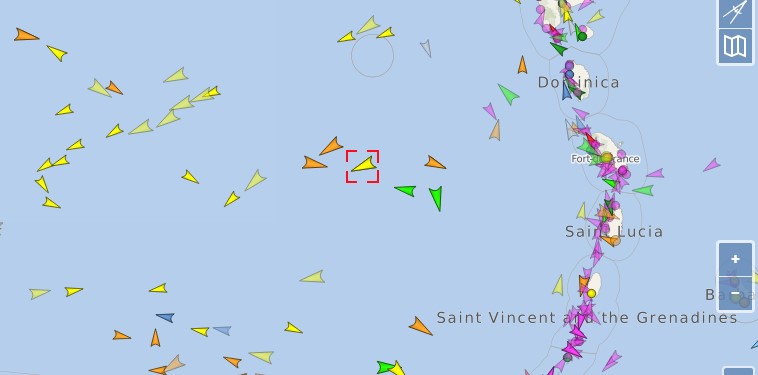
On other fronts, I’ve been busy figuring out my navigation tools so I’ll have an update on that soon. We’ve also received a bunch of samples from our friends at Backpacker’s Pantry so we’ll start eating re-hydrated freeze dried food over the next month; this will allow me to select what will work well for my palate.
And then, keeping an eye on weather, check this out:

There’s only accepting what I’ll get
Scatterbrained
That’s very much how I am these past days. I can feel that I’m starting to get into “preparation” mode. The task at hand is so enormous and diverse (including a job search) that I’m not yet able to focus my energy into specific accomplishments. Well, ok, that’s my usual self-deprecating me speaking there. There have been a few developments since my last post.
Sailing!
It had been 3.5 months since I last had gone out sailing. Every year, the SSS organizes a fantastic race in the San Francisco Bay: the Three Bridge Fiasco. This race usually attracts over 300 racers, strong tidal currents and light winds, and often ends up with a very large portion of the fleet retiring. I double handed on Frequent Flyer, a Farr 30. We did retire; still, it was fun being on the water again.

On the wait list
I’m in need of a berth for Changabang. The folks at Redwood Landing Marina are not accepting my application because the owner is a foreigner. I’ve applied for the wait list for Pillar Point Harbor. It’s unclear if I’ll have a slip by the time Changabang is up San Francisco.
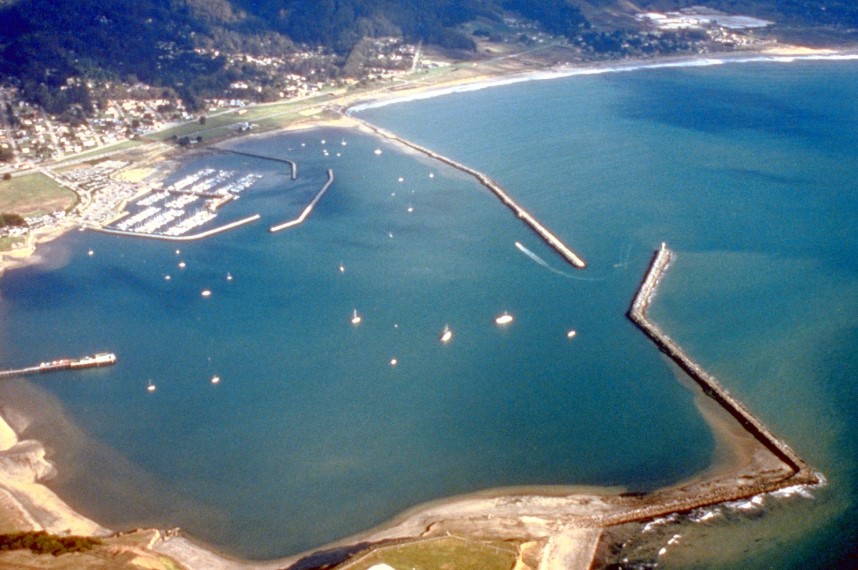
Marking things off the shopping list
I’ve slowly started shopping for things and they’ve started arriving. I bought a sailing harness as I don’t think a life jacket is of much help when sailing solo offshore (in fact, I got two as the seller seems to have made a mistake). Some of the navigation lights need replacement bulbs so I bought 4 LED bulbs. I also bought 150 feet of 2″ Dacron repair tape; this is to wrap the fiberglass mainsail battens and associated spare (these shed micro shards of fiberglass everywhere; it’s also to prevent splinters should they break when in use). 50 ft of 1/8″ shock cord will be used to re-attach the mainsail. The battery on my portable VHF HX870 did not seem to hold the advertised 12 hours so I got a new one.

Ouch, that hurts!
And, ahem, I got to cough up the remaining invoice for the shipping of Changabang. There are still incidentals but, oh boy, my fingers were sure heavy when I setup the wire transfer online.
Wait, is that a sponsor?
I realized how much food I might need when I started counting the number of bags of freeze dried food I’d have to buy. Let’s say we’ll need 6 months to finish the course and that I eat 3 times a day. That’s 3 x 6 x 30 or 540 bags. Add 20% for safety and we’re talking about 650 bags. At about $8 each that’s $5,200! I started wondering if I should do my own freeze dried food! So I decided to reach out to the main players and ask for discounts or something. Most of them came back negative but Backpacker’s Pantry made me a solid proposal that will help me cut the cost in two. It’s not sponsorship but it’s a very nice gesture. I really enjoyed their Pad Thai on the way to Hawaii during the SHTP in 2018. Now, I do know that there are options to buy in bulk and compose your own meal. I’m just not sure that’s something I’d like to do while sailing.

Navigation
Today I took out the small scale paper charts I had bought to start plotting my course (I mostly looked at the South Pacific). I had to reach out to Navionics to better understand my electronic charts options (what happens if my subscription runs out when I’m out there?). I’ve researched what I could find about Torres Strait.
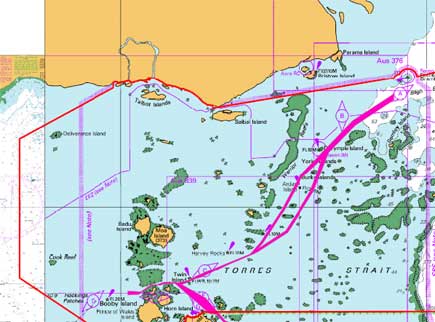
Over the next 30 days I would like to finalize my navigation tools and charts. Although using SailGRib WR worked to sail to Hawaii, I think I need something a little more practical than a tiny phone screen for this circumnavigation: a larger tablet or a laptop (I got an old one with Adrena with Changabang)? Separately, I did get useful advice from Stan Honey, which I plan to research over the next few days. Everything starts adding up. Lately I have not been watching the wind forecasts daily as I used to; by this time I would be somewhere in the middle of the South Atlantic and, in fact, I should start watching for lows spinning off the East Cost of South America.
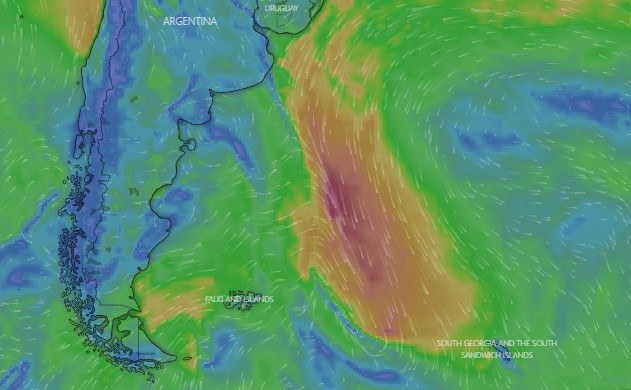
Chugging along
All the while Changabang continues her journey towards her new home. And I’m still trying to find a new job.
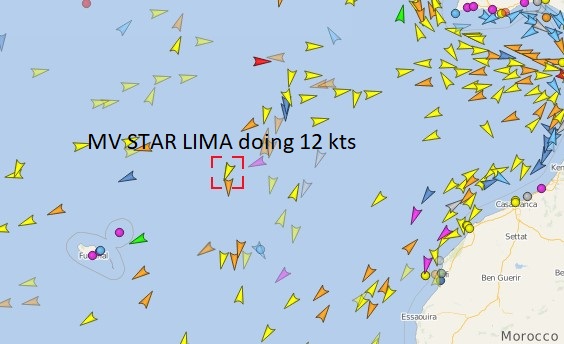
Did I say scatterbrained?
Money, doubts, weather and updates
This post is going to be the combination of a few things. Hopefully enough to keep you entertained until the end.
Money
Or lack thereof … I’m officially boat poor. Funds have been transferred to the seller and my Euro funds have been wiped. We’re finalizing paperwork and I’m lining up the delivery to Antwerp, shipping company, import agent and other small things. After that, my US funds will be next in line for decapitation. Is it worth it? Yes! I can’t wait for the boat to be here and start preparing. But … read on. Or go here and donate a little to help replenish funds.
Doubts
Of course I’d lie if I wrote that I feel super happy and excited. It’s quite the opposite. There had always been doubts about this undertaking, fears. This particular transition to being a boat owner again crystallized them a little more, which is good as I can now better see what they are, where they stem from.
Nobody and nothing is putting me on this path. It is solely an individual decision. I am not embarking on this adventure to prove anything. It is just something to do and I do love the vision of sailing solo, being immersed in Nature. And, maybe, I want to find myself.
When I hold the thought of this project in my heart, I feel naked, exposed. There is nothing I can lash onto, no obligation, no dependence, none else’s direction. I stand alone. Maybe, that’s what adulthood is about. Making decisions, charting one’s own course, without moral guidance, but one’s own, whether familial, professional, social or religious. Of course, I’m receiving help from folks and that will continue, I hope. I’m not saying that I’m executing this project completely alone. I am saying that when I go up the lighthouse to see who’s shining the light: it is only me up there. Can I be trusted?
Weather

I’ve been keeping an eye on weather, mostly using this and that. My goal was to study the course from San Francisco to Torres Strait. The common way is to go South, pass the Equator somewhere between Samoa and Tahiti, with the hope to avoid doldrums (ITCZ/SPCZ), thunderstorms and light/variable wind areas. But that adds about 800 NM to the Great Circle route. That’s about 4-6 days of sailing. What I am finding is that:
- Leaving from San Francisco may not be as easy as I initially thought. In November there are all sorts possibilities. I could find myself in strong headwinds, no wind or storm conditions. And then sometimes the tradewinds are well established.
- Similarly it is not clear that crossing between Samoa and Tahiti is best. Sometimes the ITCZ appears to duplicate itself. As the picture above shows I could get trapped in light wind and thunderstorms. Things usually change pretty quickly though.
- Forecasts for the Arafura and Timor seas usually show light head winds (3-6 kts). That’s going to make for a long passage! We’re talking about 500 NM at a speed of 3-6 kts or about 5 days.

All that was fine; the big surprise was extreme weather! I knew my course would go through hurricane season in the East Pacific, the South Pacific and the Indian. But I just shrugged it off. Can’t do that! Oh boy, three tropical cyclones have already materialized near my course. There was Rita between Vanuatu and Fiji. And then Ambali; oh gosh Ambali! Explosive intensification they say. Based on JTWC data, Ambali’s winds increased by 185 km/h (115 mph) in 24 hours, marking the fastest 24-hour intensification recorded in the Southern Hemisphere since 1980. Winds topped at 155 mph! It really took less then 48 hours for this thing to develop into a killer. If you were close by there would have been nowhere to run. Add Belna, North of Madagascar, not as explosive, not as strong but larger and longer lived. Ok then … can’t shrug this off. I must continuously monitor extreme weather.
Is there a silver lining? Those 3 hurricanes were NOT on my course.
Other bits
I’ve updated a couple web pages on the web site, here and there.
I came to the realization that, when we will go around Cape Horn for the last third or so of the journey, the boat will likely have about 30,000 NM under her belt and will need to sail another 8,000 more. I’m not a hard core racer so I wasn’t likely to push the boat hard but I will need to sail conservatively if I want to keep the rigging and everything else as fresh as possible. So, I’ll have a boat heavily loaded, sailed conservatively; I wonder how much slower that’ll make us. Time to downgrade our polars!



